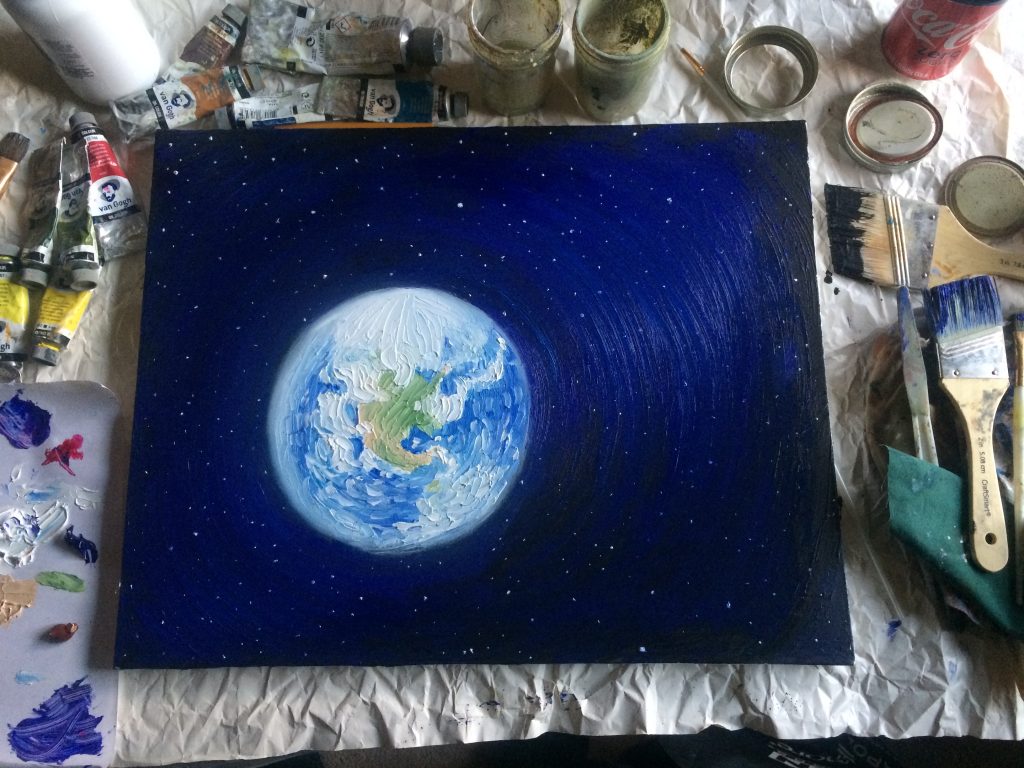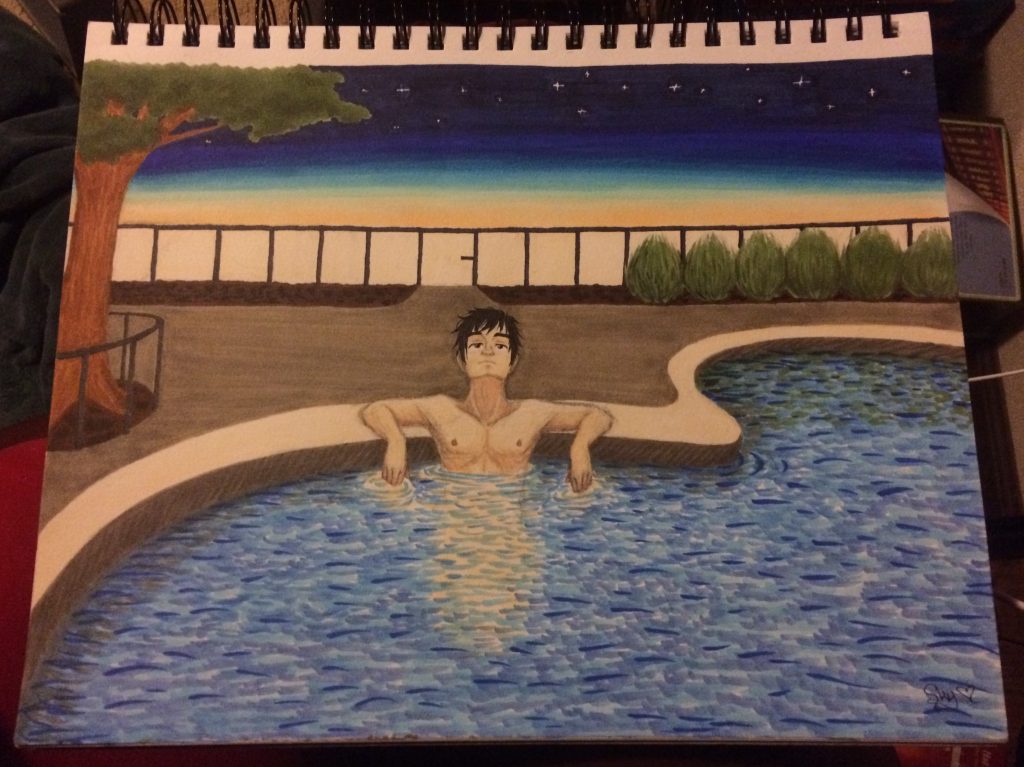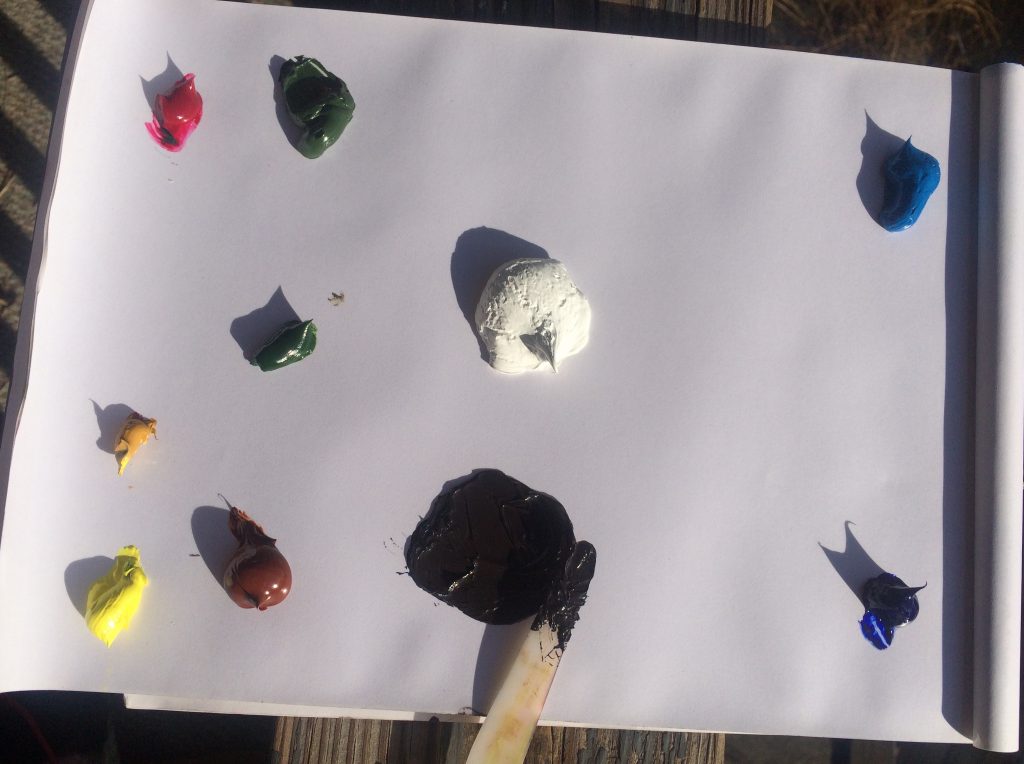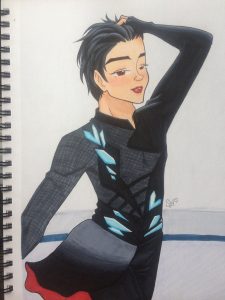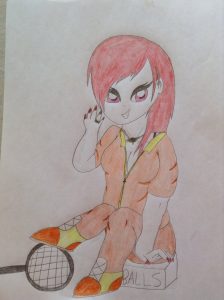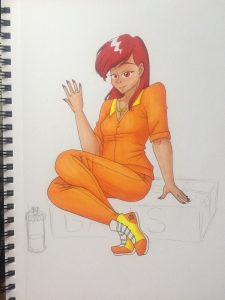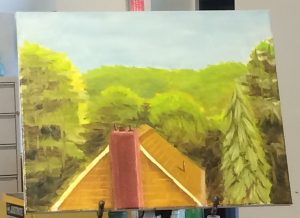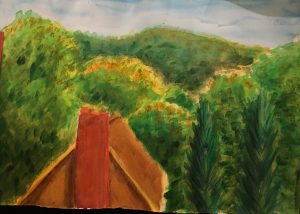Latin: With Regards to the Subject of Beauty
How many beautiful things just evaporate into the wind?
One day on my way home from work, I descended the elevator onto the train platform, listening to music. I forget which song I was listening to, but whatever it was, it definitively clashed with the noise of the station. It was not ordinary station noise—footsteps, chatter, rustling of paper maps and bags. As soon as I placed the sound, I quickly removed my headphones and stuffed them into my bag.
There was a man playing a beautiful, haunting, nostalgic melody on an electric keyboard. He had a sign up next to him, a whiteboard on a stand. “I hope everyone is having a wonderful day!” it said. “Just trying to get my music out. Hopefully my music will be heard. Feel free to let me know what you think!” This was followed by his Venmo information and, below the sign, a red cloth bag. Until my train came I stood and leaned against a pillar, listening to the music. It was the most amazing music I’ve ever heard, and I wanted to record it, but after I had the thought to do so, I hardly had two minutes before my train came and I had to leave for home. I never did let him know what I thought, but I did drop a twenty dollar bill into the cloth bag.
My fiancé is an artist, but not like me. She didn’t “draw”, she did literally everything else. Anything on the border of that word was fair game—typography, topology, graphic design, architectural sketches, blueprints, you name it—but never proper art. At least, not anymore.
For a long while I had the nicest handwriting of anyone I knew (don’t be envious, it’s a thoroughly useless skill to be good at, in fact it winds you up addressing a lot of envelopes), but then I met her and that changed. Whenever she would come to visit, and for a while even after she was living with me, she would leave me little notes. “Good morning, love. Have a nice day today.” “So you know, I’m headed out to buy some groceries, I’ll be back in an hour or so.” “Hey, darling, would you mind putting a can of soda in the freezer for me so it’s nice and cold when I get home?” I used to keep all his notes. Then there got to be too many and I stopped. When we moved, I left them at my parents’ place.
My youngest sister is a writer—among other things—and I used to have frequent conversations with her when I had yet to realize that amateur fiction is something I am neither good at nor particularly enjoy. She has a way of beautifully crafting circular metaphors, where a person does a thing and the thing is blue, and then through the course of the story it shifts colors to gold and then to red but then finally, and usually this comes after the character dies, it shifts back to blue, and it’s wonderful and reflective and sad and I am not doing it justice with this poor artist’s description.
I used to want to write down her eloquent phrasings and plots, but then at one point, I was driving her to an event of some description, and she said something particularly eloquent, something about golden braids. I wanted to write it down but I couldn’t pull over to do so as we were pressed for time, and I asked if she could write it down for me and she said, no. I asked why and she said, maybe it’s better to let some words just become air.
There is so much beauty in this world and much of it is unobserved, or, perhaps worse, unnoticed. I wonder who else who heard that man at the station is still haunted by his music. I wonder who else saw my fiancé’s doodlings and notes and the way he organized our bedroom and thought of Sen no Rikyū’s ideals of simplistic natural beauty. I wonder who else read my sister’s metaphors and plots and was moved by their eloquence. It’s entirely possible that I’ll never know.
But why is it even my first impulse, when I see something beautiful, to capture it? Why is it humanity’s first impulse—for this I presume is the reason people put pretty birds in cages? We desire to possess what is beautiful. My justification involves a desire to experience the beauty more than once and my memory’s inadequacy at satisfying this desire, but it’s just that, isn’t it? A justification. If you have a seemingly different thought process but it still winds you up with the same result, chances are you wrote the bottom line before the arguments above it.
I’ve tried to deliberately give up this impulse to capture beauty, because I’ve noticed the capturing detracts from the observation. If you’ve already seen something a million times but are trying to preserve the memory for a later date when you’re liable to have forgotten many of the details, this is a good time for capturing. But if this is perhaps your only chance to see the beauty, just see it. “I want to look at it” clashes violently with “I want a picture” and leads to a poorer overall experience of the beautiful thing, and it seems to me that a faulty memory fully utilized is still better than that same memory half-assed plus a blurry photograph. If you don’t see it again you have one good memory; if you do, you can take the photo next time.
I think the man at the station knew that. Besides the message, he only had his Venmo information on the sign: nowhere people could find his music to listen to more, no Soundcloud or Youtube username. Perhaps my fiancé knew it too, though it’s possible she’s just dismissive of her talents: in a society built on self-deprecation and humility, and among humans for whom words shape reality, it’s not surprising that many people are chronically undervalued. I know my sister knew it. Recently, I learned. And now, you know too. I hope it is of use to you.
